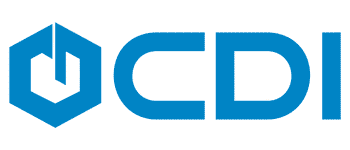The Consultant's Corner: Inventory Management
- Jul 3, 2018
- 5 min read
Welcome to this month’s issue of the Consultant’s Corner, which centers around organizational needs for inventory management and how Laserfiche can be a viable solution for businesses. Cities Digital’s Consultant, Rob McCluskey, System Architect addresses a variety of questions surrounding how Laserfiche can be an effective tool in managing inventory.
Good inventory management helps make businesses successful and is a key element to the operational efficiency of an organization. The ability to provide premium customer service, balance supply and demand, improve efficiency, and increase profitability are just some of the benefits that can be achieved with quality inventory management. Determining the role that Laserfiche plays in inventory management is a suitable place to begin our conversation with Rob.
As an organization looking for inventory management options, how can Laserfiche be used as a complete Inventory Management Solution?
Laserfiche offers the versatility for organizations to use as a complete inventory management solution. Rob explains that “organizations can leverage Forms’ out-of-the-box features in conjunction with relational database tables to build a complete inventory management solution. The catch here is on the SQL side, in most instances, a single, non-relational SQL table (often static, although occasionally updated via Workflow to refresh data from a CRM, etc.) is sufficient for preparing dynamic template fields or lookup fields in Forms. For more complicated data management needs such as an inventory management system, a compelling case can be made to implement a set of relational SQL tables, using primary key/foreign key pairs, to ensure data consistency and integrity.”
What types of industries can benefit from managing inventory in Laserfiche?
While many organizations can benefit from managing their inventory in Laserfiche, Rob says, “the industries best suited to leveraging Laserfiche for use as an inventory management system would be those whose business is not primarily inventory-based. For example, shipping and retail organizations have dedicated inventory management systems, so it is doubtful that they would derive much value from implementing one in Laserfiche. These organizations would probably be better served by integrating their existing inventory management system with Laserfiche.” He shares, “the strongest case to be made for using Laserfiche for inventory management would be for organizations or departments that are already using Laserfiche but have a need for an inventory management system.”
How can Laserfiche keep track of items like ordering inventory, storage and for sale inventory that is constantly changing?
According to Rob, the use of “Laserfiche Forms, in conjunction with a set of well-defined relational SQL tables, can be used to keep track of inventory across all stages of its life-cycle. Using relational tables (i.e, primary key/foreign key pairs) is essential for ensuring consistency and accuracy.”
Would you recommend using any specific types of forms to aid in managing inventory?
“Yes!” Rob says, “let’s consider an internal inventory management solution, used to track IT hardware.” He recommends, “a form for adding new inventory items to the system, one for changing or retiring items, and one for assigning items to members of the organization. In addition to, a form for looking up inventory according to whatever criteria works best for the organization—for example, the organization could use one form with 2 tabs to look up inventory by ID and category. The results of this lookup would return pertinent data about the members of the category or about the specific item queried by ID, including assignment history. This set of forms could be modified to allow for look-ups across various stages of the inventory life-cycle as discussed earlier and could be accompanied by a set of forms (such as order forms or invoice forms) that would pass information to Workflow to trigger an inventory item’s transition from one life-cycle stage to another.”
How does Workflow contribute to an inventory management solution?
An essential component, Rob explains. “Workflow is critical to any process as described above since Forms cannot itself write to databases, Workflow is required to do the heavy lifting. In processes that track inventory across its lifecycle, Workflow could be leveraged to kick off subsequent Forms processes at each stage. Without Workflow, a robust inventory management system is not possible within Laserfiche.”
If an organization has Quick Fields, in what ways might that benefit them when it comes to managing inventory?
In a scenario where an organization has Quick Fields, Rob shares some benefits that the organization might experience when it comes to managing inventory. He says “the organization could, for example, use Quick Fields to scan paper order forms into the system, parse OCRed text or bar code information from the scanned documents, and use that information to both initiate the next stage of the order process and update the inventory database. Laserfiche could automate much of the process after the initial scan using a combination of Workflow, Forms, and user interaction with the Laserfiche Client.”
Can you explain some of the reporting options that organizations have after implementing an inventory management solution?
The reporting capabilities are extensive. According to Rob, “reporting options are available from all modules. Organizations can use the Forms dashboards and report features to track an order or inventory change as it passes from one stakeholder to the next. They could use Workflow to query the inventory solution’s SQL tables and prepare an HTML, CSV, Word, etc., a report containing detailed information for relevant inventory items or lifecycle stages. Finally, custom searches can be configured to allow users to pull order forms, invoices, etc., for a given inventory item or lifecycle stage. The sky is pretty much the limit in terms of reporting on a system like this.”
What types of inventory valuation methods can be used with Laserfiche?
The SQL tables are important, Rob says “essentially, if the SQL tables are designed such that the appropriate costs and values are associated with relevant inventory items, Workflow and/or Forms can be used to accommodate first-in-first-out, last-in-first-out, highest in, first out, or pretty much any other inventory valuation method the organization uses.”
Are there any limitations to inventory management with Laserfiche?
Organizations could be limited with Laserfiche, Rob says “if the management needs are not able to be accommodated using various Laserfiche module (Forms, Workflow, Quick Fields, etc.) and SQL. If the system needs to interface with another software application, for example, custom integrations might be required to attain the desired functionality. Other than that, the Laserfiche modules plus SQL are a pretty powerful combination—complicated calculations and detailed reporting can be achieved for most inventory management needs with just those applications.”
Can you give some examples of how customers have implemented an inventory management solution using Laserfiche?
Seeing how organizations are implementing solutions through examples is beneficial. Rob shared that recently, he “worked with a customer that needed to track items within their IT department. The client wanted a system that allowed them to add their backlog of inventory, as well as new inventory items moving forward. The solution that was built for them used 5 or 6 related SQL tables, along with a SQL view and a stored procedure to accommodate Forms’ fussiness when querying against NULL values in a SQL table. There were forms for adding, changing, retiring, and assigning items, as well as a “read-only” (i.e, not able to be submitted) form that allowed the user to lookup inventory items collectively by category or individually via ID. The category lookup was meant to facilitate the ID lookup, so if the user did not know the ID, they could look up all active inventory items in a given category, grab the ID for the relevant item, then perform an ID lookup for even more detailed information about that particular item, including its assignment history. There were a handful of workflows for updating and database tables for the various forms.”









Comments